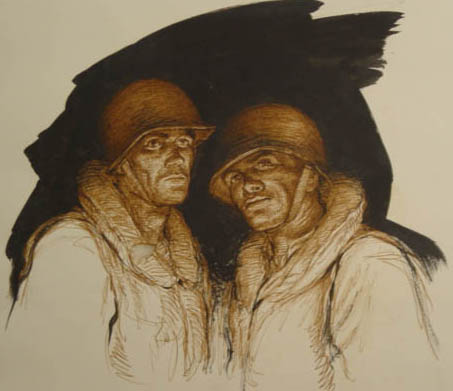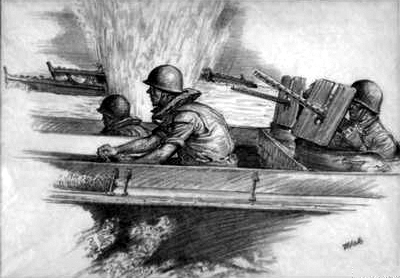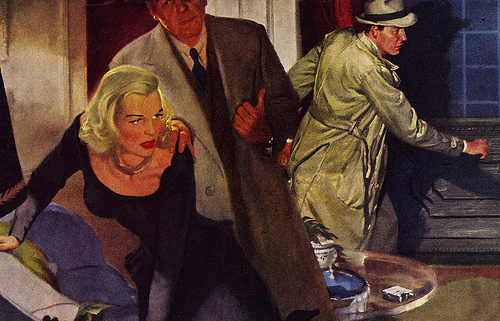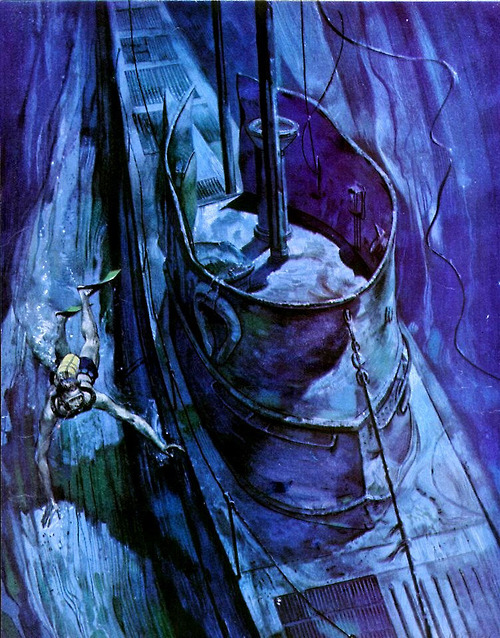Combat Gallery Sunday: The marital art of Ken Riley
Born 1919 in Waverly, Missouri, Kenneth ‘Ken’ Riley is known primary as a ‘cowboy artist.’ This is because some of his best known works were Crow Fair, Split Horn Bonnet, and Legends of the Mandan. As such he is regarded as something of the modern Frederick Remington but in canvas. This led him to become a founding member of NAWA (the National Academy of Western Art) in 1973 and inducted as an Emeritus member of the Cowboy Artists of America .
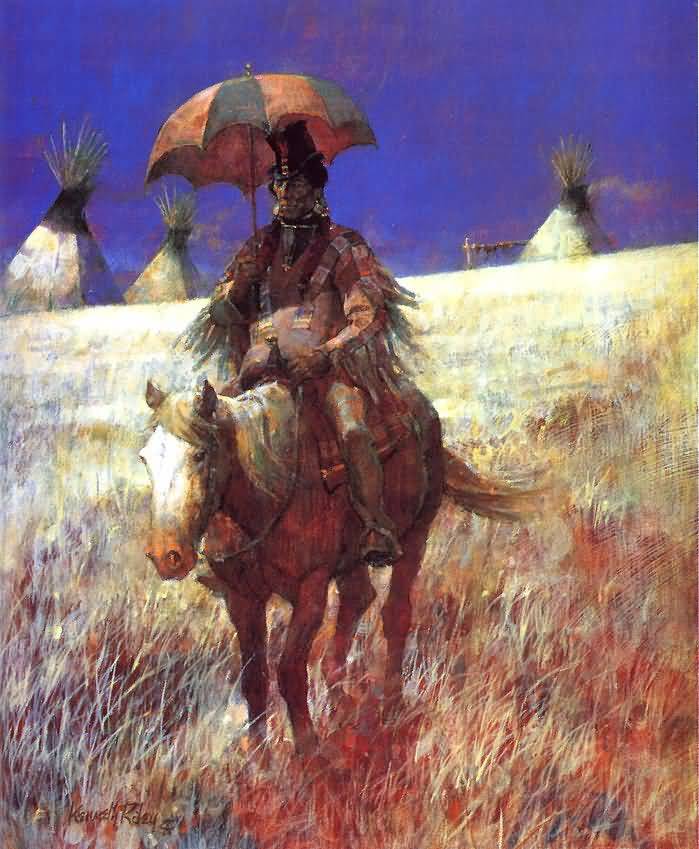
Grasslands By Ken Riley. Image from From “First People“
Well, Riley did a lot of other stuff too. Before the war he was he was a student of Thomas Hart Benton. He also signed up for the military in WWII and cut his teeth as a combat artist in the U.S. Coast Guard (which included a mural at the Coast Guard Academy.)
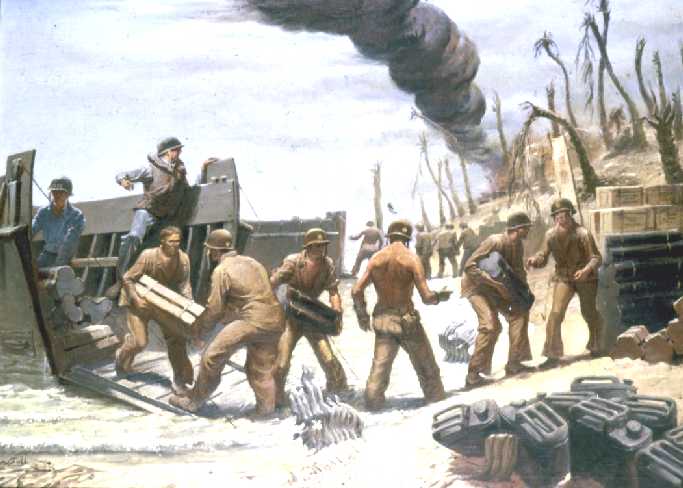
“Offloading Supplies” By Ken Riley. Drawn and painted from what the USCG combat artist observed. Note the distinctive gold circles on the naval stevedore’s M1 helmets. Current in the collection of the USCG Museum. You can really feel the influence of Benton Hart in this painting.
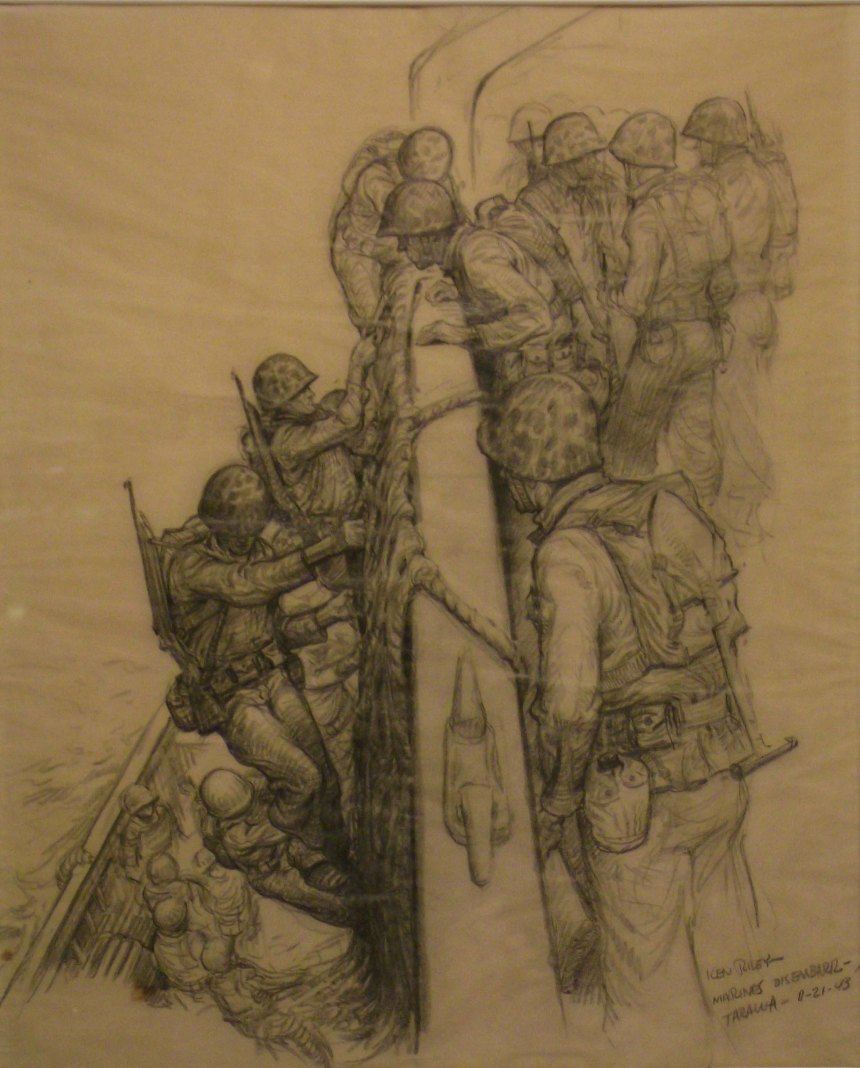
“Marines Disembark at Tarawa.” Sketch by USCG combat artist Ken Riley in the collection of the Mariners Museum
After the war he made a hard living by cranking out pulp illustrations for $15 a pop and unsigned comics to further earn his stripes.
He was a frequent illustrator for National Geographic, painted Yellowstone for the Society of Illustrators and painted a series of iconic images in the history of the U.S. Army National Guard’s Heritage Command.

The Surrender of the Army of Northern Virgina April 12, 1865 by Ken Riley. Currently in the U.S. Military Academy Museum, West Point, New York
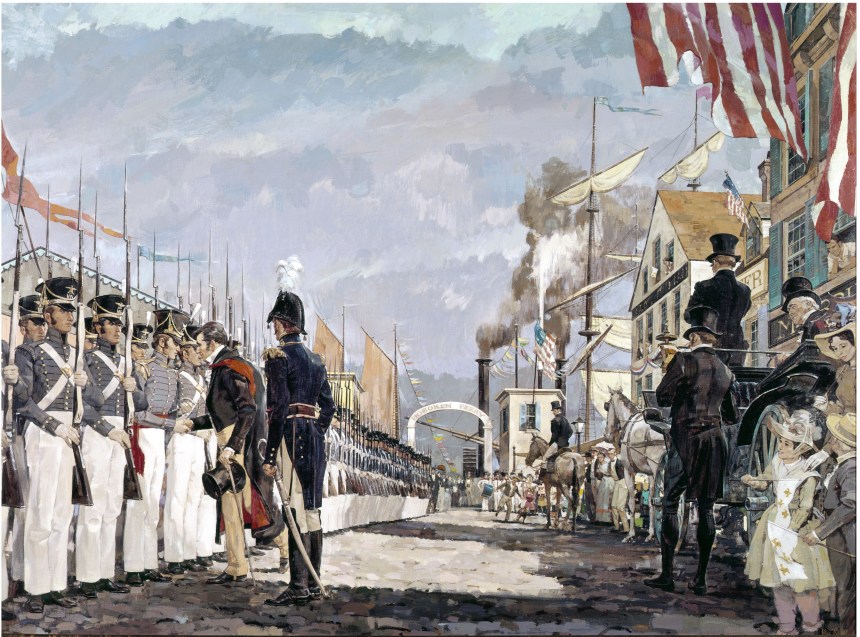
Ken Riley, “The visit of the Marquis de Lafayette to the U.S”, New York, July 14, 1825. 2nd Battalion, 2nd Regiment of Artillery, New York State Militia welcomes the visiting hero of the American Revolution Marquis de Lafayette. To honor him on his day of departure home to France, the unit adopted the name “National Guard” in remembrance of the Garde National de Paris, once commanded by Lafayette during the early days of the French Revolution. Taking note of the unit and its new name, Lafayette left his carriage and went down the line of troops clasping hands. It was this instance the the modern term of “National Guard” came from in the U.S. From the collection of the U.S. Army National Guard. Click to very much big up
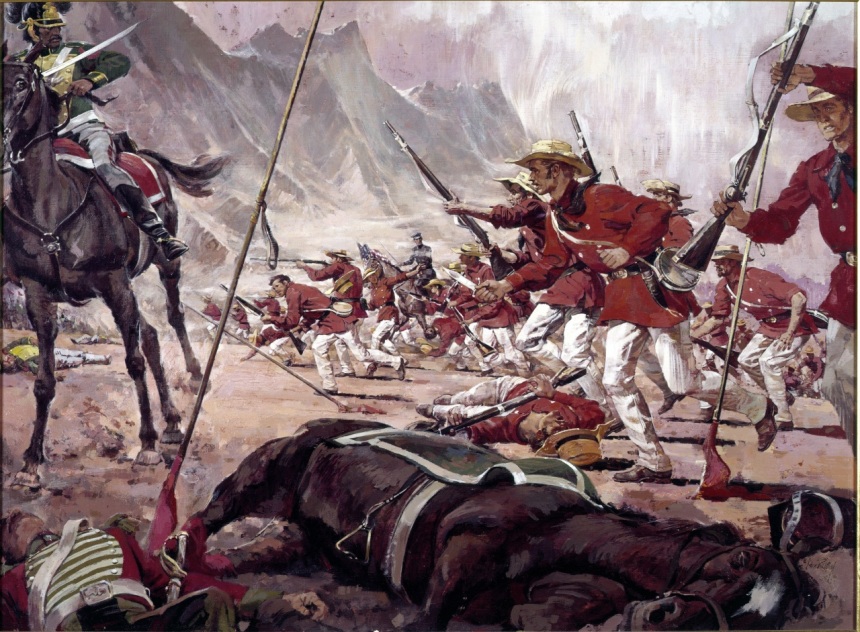
Ken Riley, Buena Vista, Mexico, February 23, 1847 Showing the charge of the 1st Mississippi Rifles under then-Col. Jefferson Davis. Wearing their characteristic red shirts and straw hats, these men were equipped with 1841 pattern musket rifles and bowie knives. They saved Zach Taylor’s bacon that day and are still remembered in the lineage of the Mississippi Army National Guard . From the collection of the U.S. Army National Guard. Click to very much big up.

“Remember the River Raisin!” by Ken Riley, depicts a scene from the October 1813 Battle of the Thames, a decisive victory for the Americans in which Chief Tecumseh gave his life and Americans re-established control over the Northwest frontier. Kentucky troops were encouraged to fight this battle as revenge for an earlier massacre of Kentucky militia at the River Raisin. From the collection of the U.S. Army National Guard.
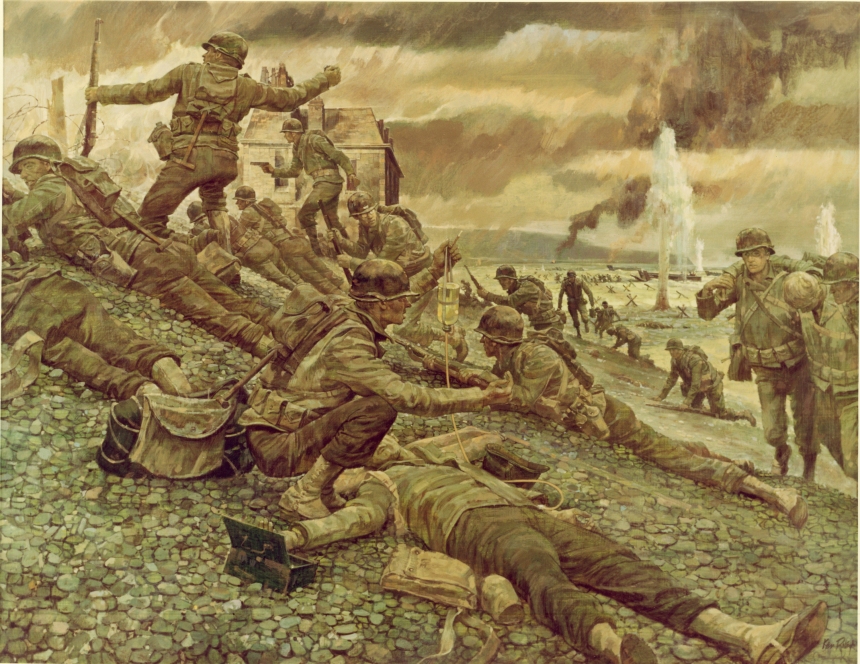
29th Infantry Division. D-Day, Omaha Beach Painting by Ken Riley. The 29th “Blue and the Grey” was made up of National Guard units drawn from both the North and South. Painting by Ken Riley From the collection of the U.S. Army National Guard. Click to big up.
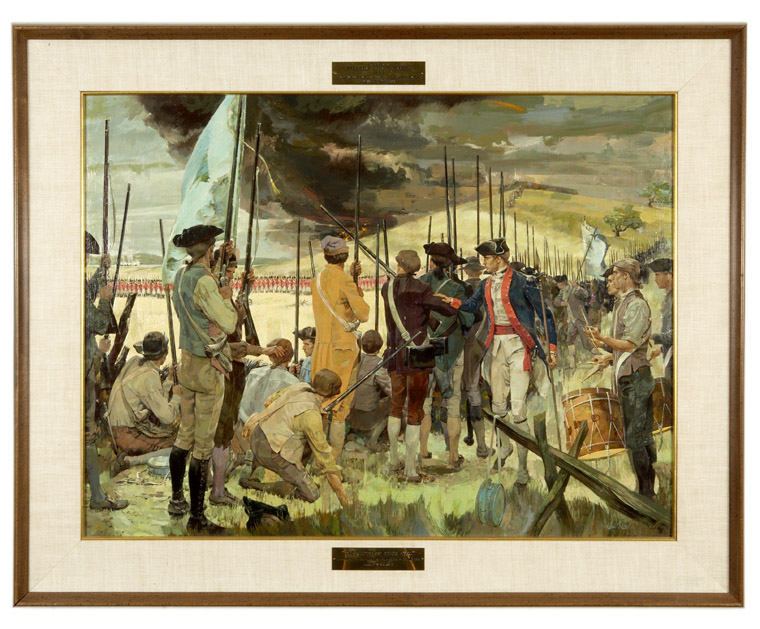
“The Whites of Their Eyes” Colonial militia at Bunker Hill 1775. Ken Riley. Located at the JFK Presidential Library.
Riley’s paintings hang in the permanent collections of the White House, the U.S Military Academy, the Air Force Academy, and the Mariners Museum and the Smithsonian Institution in Washington, D.C. and he is alive today at 95. Thank you for your work, sir.
